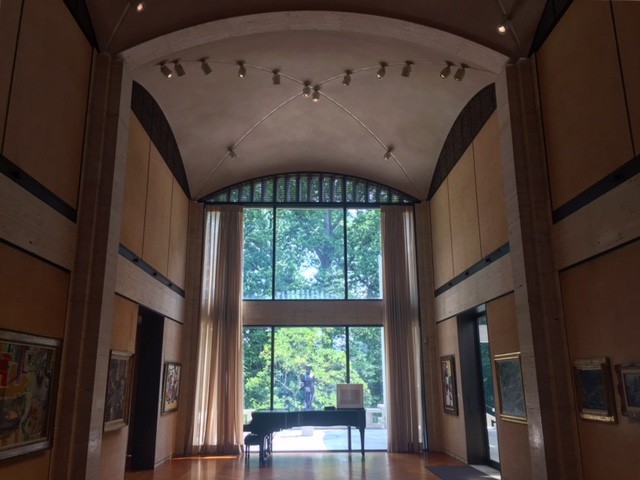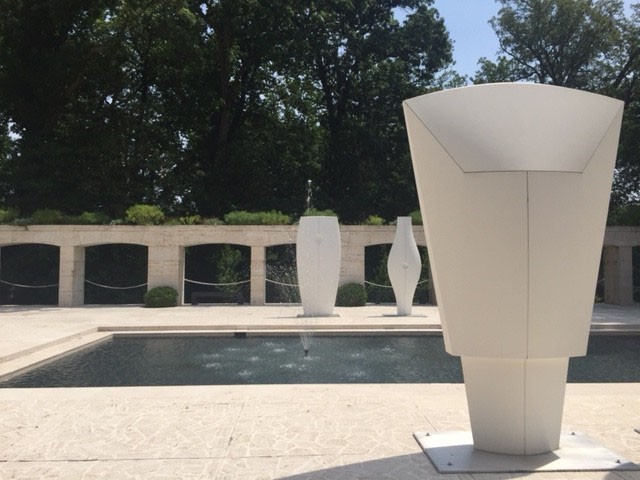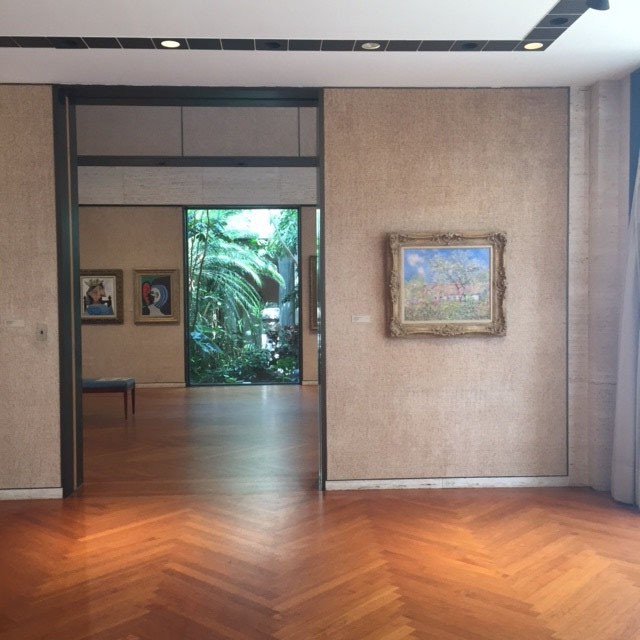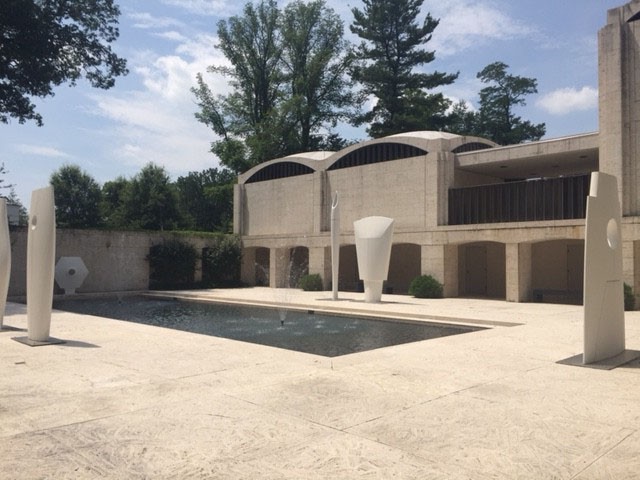Building of the Week: Kreeger Museum

The Kreeger Museum is surely Washington's only museum with a pool. Image by the author.
Nestled among the spacious homes of Foxhall Crescent, near the Palisades, is the Kreeger Museum. This hidden gem is worth visiting for its genre-defying architecture as much as its art collection.
The Kreeger Museum is located at 2401 Foxhall Road NW. Philip Johnson designed the residence in 1963 with Richard Foster. Johnson – by then a world renowned architect after completing the Glass House and the Seagram Building – explained to hopeful clients David and Carmen Kreeger that he no longer designed private homes. After some thought, he decided that if their main desire was a museum for their expansive art collection, he was open to the commission. The Kreegers simply kept quiet their plans to move in.
The centerpiece of the museum is its Great Hall. Image by the author.
Completed in 1967, the museum is a stunning example of the versatility of stone. Rather than skewing neoclassical, as the material often does in Washington, this building defies easy categorization.
The approach to the Kreeger Museum presents a striking, nearly white façade, set back behind a yawning traffic circle. After entering, visitors are drawn into the Great Hall. The proportions of this room – which otherwise shares the fabric walls and chevron wood floors of much of the rest of the residence – declare it the center of the building. The upstairs spaces are off limits, while the simple basement level houses temporary exhibits.
Even the vaulted porch roof is executed in limestone. Image by the author.
From the great hall is a window into the atrium evoking Carmen Kreeger’s Puerto Rican heritage, as well as the entrance to the backyard. Escaping to the elevated back porch, it becomes clear why so many of the museum’s Instagram photos are taken outside. The porch is defined by its vaulted roof structure, which is composed of four shallow domes punctured to let in light.
Typical of modern art museums, the outdoor space is home to sculptures, both on the porch and at ground level. Some works dot the pool, while others are scattered at the edge of the grass. These large stone and metal works complement the stone and black ornament of the building, acting as miniature walls and guidelines of how to traverse the space.
Sculpture becomes part of the exterior architecture. Image by the author.
The design is exceptionally unified, each room unfolding into the next – only occasionally dead-ending into a hallway. The consistent use of materials, the focus on openness, and the attention to natural light defines the Kreeger Museum’s character.
The building uses old materials in new ways, and melds numerous forms to create a space that feels derivative of nothing. The first floor walls lining the pool recall Roman aqueducts, but topped by a windowless second story, the entire design feels perfectly modern.
Staircase detail. Image by the author.
All of this suits Philip Johnson, whose work evolved during his decades of practice from modern during the 1940s, 50s and 60s, to postmodern in the following decades. Although Johnson designed the Kreeger when many of his modernist contemporaries eschewed stone, Johnson was equally comfortable with traditional materials as well as glass and steel.
View of a smaller gallery and the atrium beyond. Image by the author.
Johnson, who is credited with coining the term International Style, evolved continually during his lifetime. However, elements of his earlier designs are visible in the Kreeger Museum. His interest in light and its absence dates back to the 1949 Glass House, which itself was inspired by Mies van der Rohe. Johnson’s 1953 sculpture garden at the Museum of Modern Art includes an asymmetrically set pool, just as the Kreeger does.
While some of Johnson’s larger works feel out of proportion, the Kreeger Museum shows the architect at his finest. The building blends comfort, architectural interest, and stunning views at every angle, to create a transporting experience few buildings can claim. Despite the museum’s modest profile, it provides one of the best art viewing experiences in the city.
The modern design stands out in an otherwise historicizing neighborhood. Image by the author.
Correction: We incorrectly reported that Carmen Kreeger is from Costa Rica. She is in fact from Puerto Rico. We have since corrected this article.
